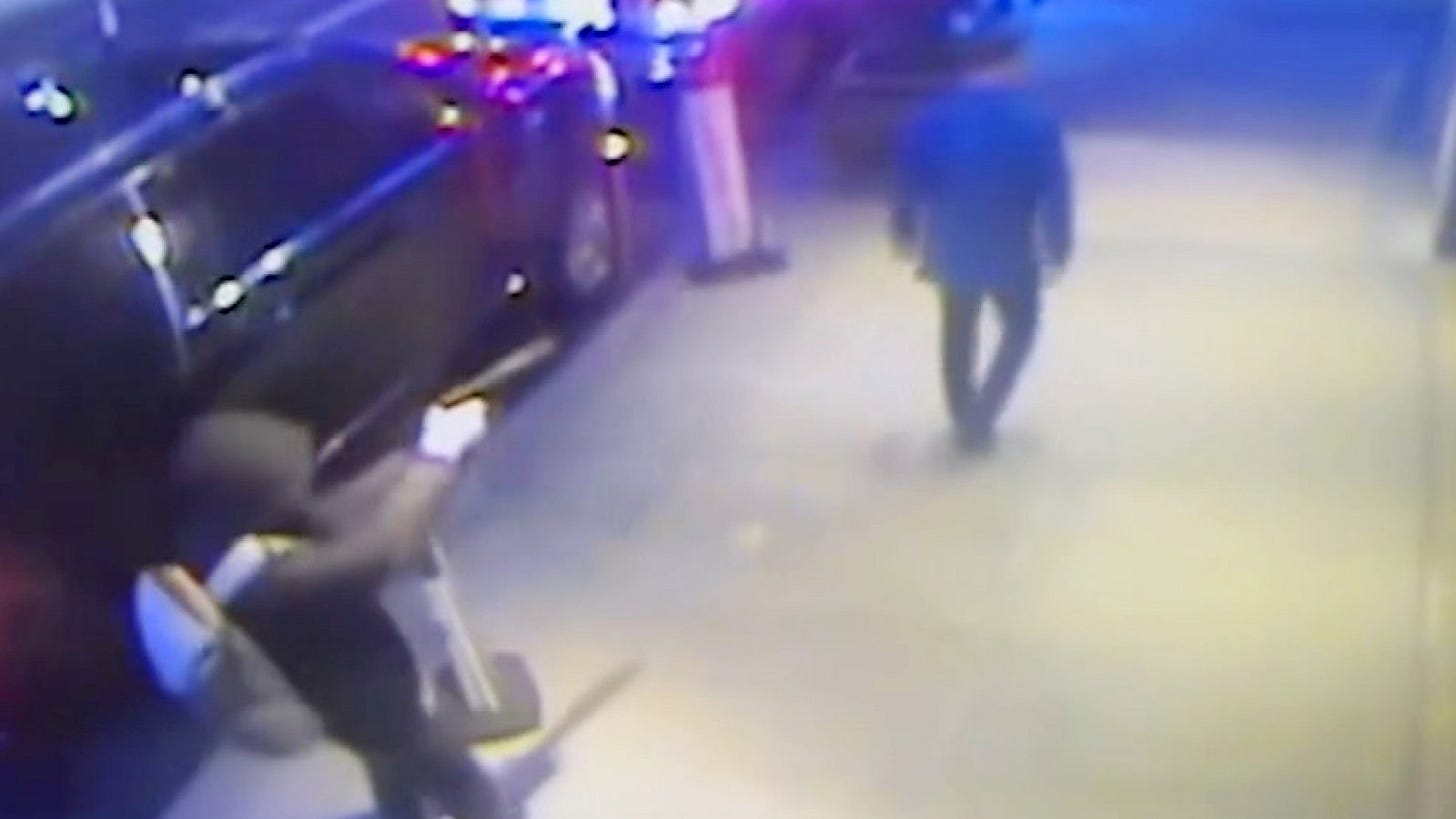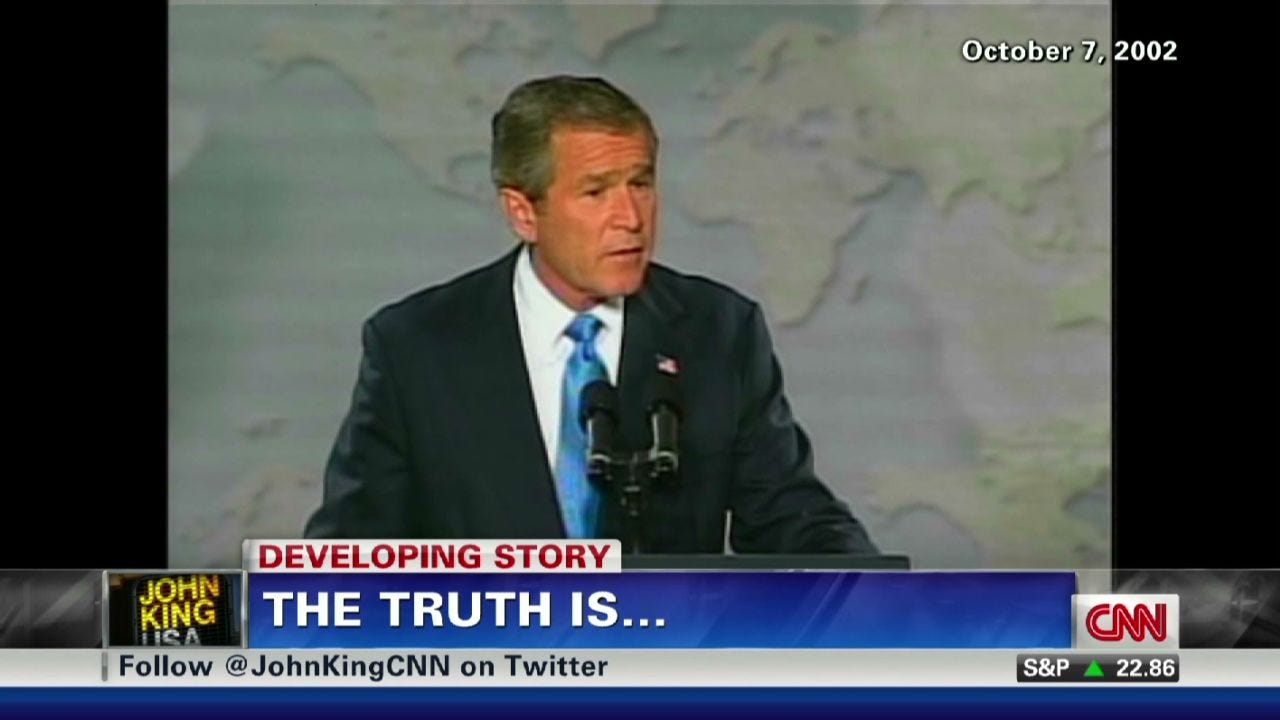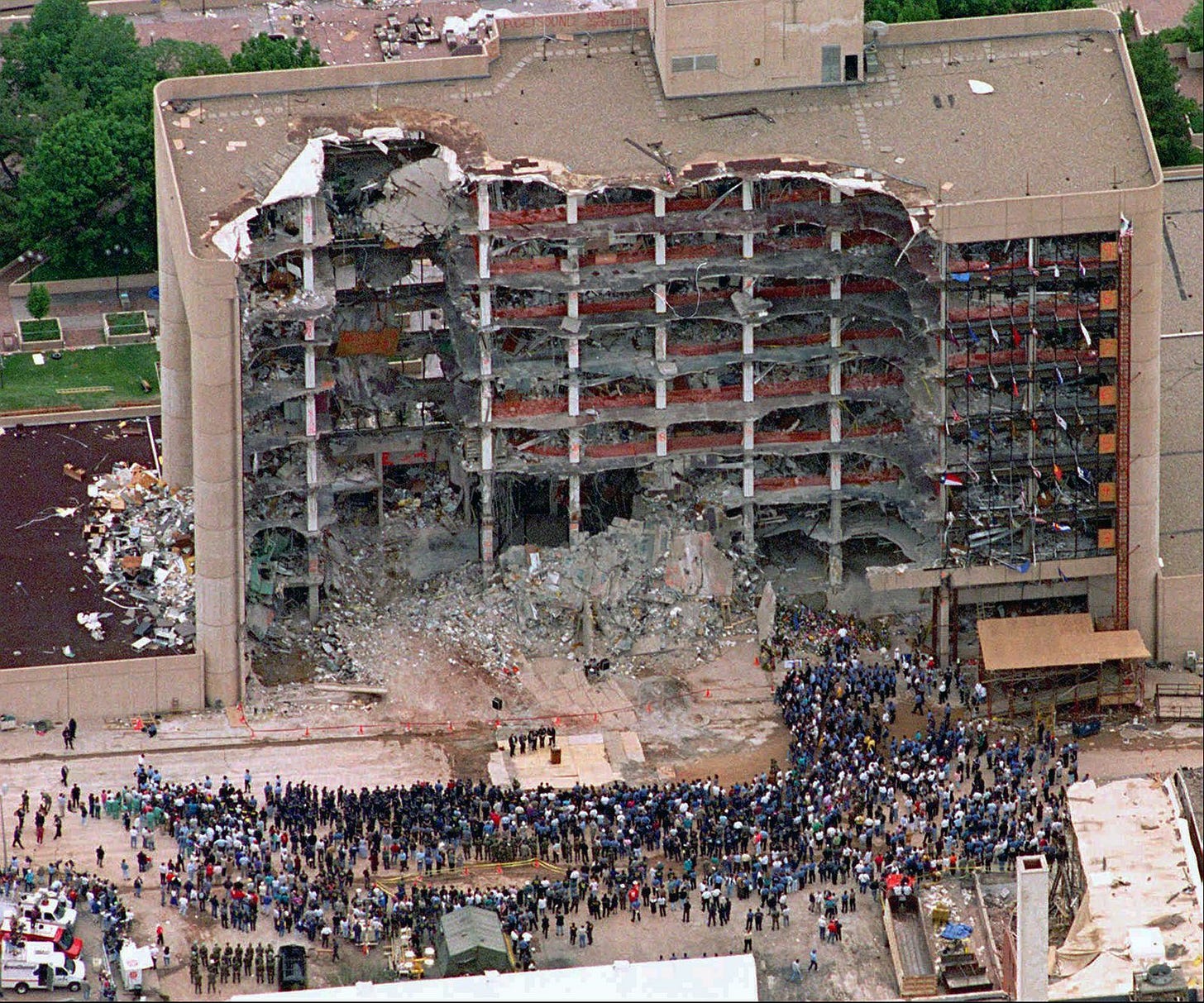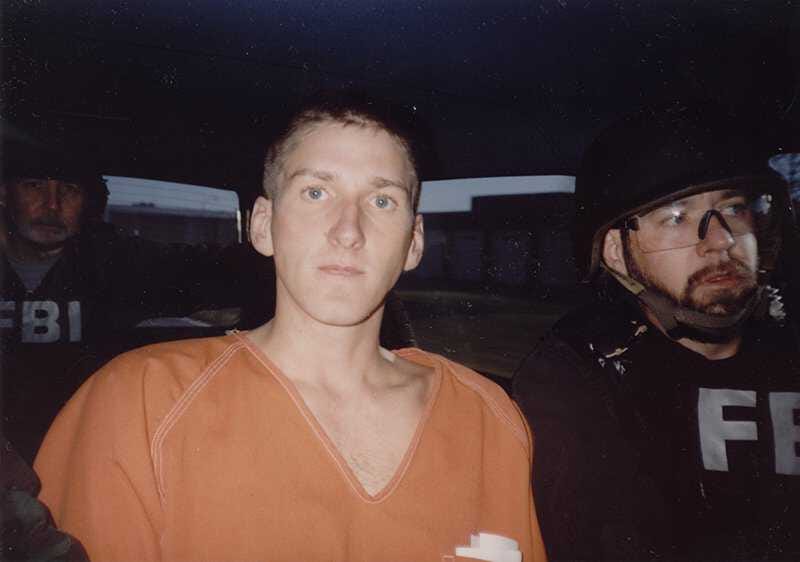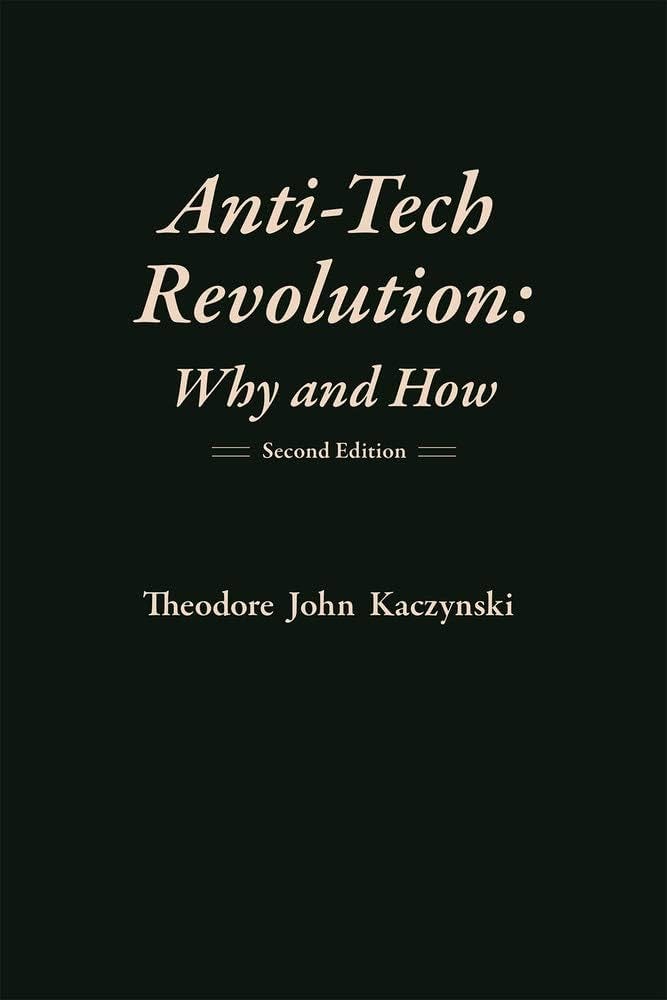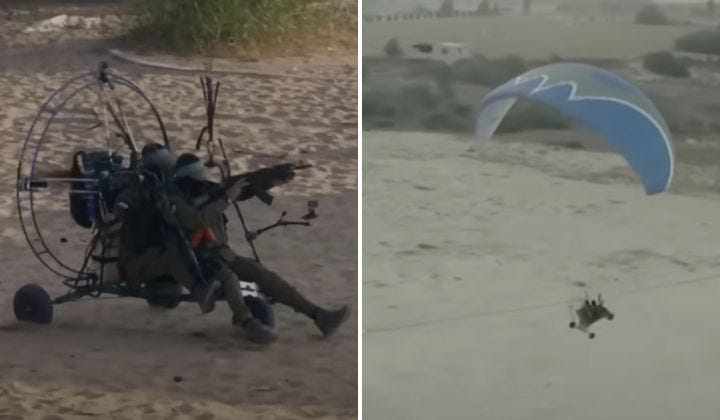ORIGINAL MASS-SHOOTER GANGSTER
The principal contradiction, clearly, is that between wild nature and the technological system. This suggests that the objective chosen should be that of “killing” the technological system […] revolutionaries should aim to bring about the collapse of the system by any means necessary.
-Theodore Kaczynski, Anti-Tech Revolution: Why and How
Set up: Catch me if you can! I’m superior in my understanding of the world, so I’m dropping terror bombs!
Clinical explanation: Children are adept at terrorizing their captors. The first-degree version of the game is not consequential: a second grader storms into an occupied bathroom whereby his sister and brother are brushing their teeth. The second grader decides to ‘drop a bomb’ in the toilet that is adjacent to the sink: “Oh, My God!” It goes without saying, the OMG game has an emotionally unsettling quality to the episode.
This is a third-degree version of OMG is a terror attack, which involves tissue damage. For example, an adult female patient reported that at the age of 10 years she was brandishing a knife in front of her family. She had returned to the general living area after a severe beating she received from her parent. When she revealed herself she was completely naked with a sharp knife. In retaliation to her captors abuses, she severely cut her body in front of them and was subsequently rushed to the hospital. Her movement of resistance elicited one response: “Oh, My God!”
Original game: The OMG game is very similar to the War game version of Now I’ve Got You, You SOB! In the latter game, White unleashes furious rage based on a sense of collected injustices in order to use “self-defense.” For the NIGYSOB player, the motivation is revenge, which is an element of OMG. However, OMG is a Catch Me If You Can version of the Cops & Robbers game. The attacks in OMG are meant to kickstart a revolution. This is played from a different role position than the “war on terror” game Hide & Seek.
In the children’s version of Hide & Seek, the “seeker” is White: they are “It.” In the game, White knows they are not really searching for Black. Black is hiding and Black knows the object is to be found; yet Black is still playfully surprised when White discovers them. This jubilation is the emotional payoff. If the one seeking (White) takes too long or finds Black too quickly, the game lacks the effect (and emotion) it requires.
In the Unabomber’s supremacist game, he was hiding off the grid in the middle of the Montana woods. The seekers were law enforcement and intelligence agencies (FBI) who utilized a human Connection (Ted’s brother and his wife) to “bust” him. The twenty-first century OMG relies on digital Connection (platforms, AI, etc.) and intelligence agencies to push false narratives of fear.
With the Media version of Hide & Seek, White uses legacy media such as television and newspapers (Connections) to promote a deceptive narrative in the promotion of war, e.g., weapons of mass destruction, “beheaded babies,” chemical attacks by dictators, etc. It is the same interpersonally: a secret relationship with an extremist network (extra marital relationship) to start a war between husband and wife. In this couples version of Hide & Seek, White and Black are involved in a three-handed game, i.e., Let’s You & Him Fight, with a “terrorist” (cheater, home-wrecker, etc.).
Theodore Kaczynski (aka “Unabomber”) is one of the Original Mass-shooter Gangsters (OMG). He decried modern technological power and its function of social control as well as environmental devastation. In his terror campaign, Unabomber played Cops and Robbers (C&R) against the authorities (FBI) as opposed to a collaboration with intelligence agencies and surveillance. The latter utilizes the Connection role to physically and/or ideologically enclose (see Occupation). The dynamics of C&R are akin to a children’s version of Hide & Seek: “See if you can catch me.” 1 As opposed to a professional criminal who does not want to get caught, White leaves a calling card amidst their crimes, e.g., manifesto.
For example, when some motorcyclists cut across Kaczynski’s Montana land, he destroyed their home with an axe and defecated in their bathtub for revenge (OMG). Berne (1964) described how a burglar playing C&R will engage in “gratuitous acts of vandalism” rather than covering their tracks. “The C&R criminal is compelled to blow off steam in the course of his work.” 2 With C&R, White’s illegal acts serve—over time—as escalating provocations. According to the journals of the Columbine killers, Eric and Dylan engaged in petty crime before the massacre. Eric and Dylan initially used sawed-off BB guns to fire at random houses before engaging in burglary and ultimately mass murder:
“We probly didn’t do any damage,” Eric wrote, “but we arent sure.” That same night, they stole some Rent-a-Fence signs from a construction site. Eric didn’t make much of the swipe, but this appears to be the moment where they crossed the hazy boundary between petty vandalism and petty theft.3
The crimes escalate in severity to reinforce the emotional payoff. The payoff in the C&R game is being found or busted, which is what happened after the publication of the Unabomber’s 1995 manifesto. The thesis of Industrial Society and Its Future is close to the twenty-first century Media game Ain’t It Awful (AIA). In contrast to the Unabomber, “Ain’t Technology Awful?”, the Media inundates Americans with the politics of fear and hopelessness (see Climate Change).
The Unabomber played C&R because he was looking for an excuse to vent his anger. 4 His arrogant life position (I’m OK, You’re Not OK) played out in a revolutionary version of NIGYSOB! Like Mass Shooter, the dramatic switch is based on the situational power of a weapon (gun or letter bomb). White moves from a Victim to a Persecutor role (one-up) and places Black in a one-down role (Victim) based on the acquisition of weapons. White is now in a superior status position to enact their revenge.
Thesis: To understand the largely twenty-first century American phenomenon of Mass Shooter, we can compare it with a twentieth-century counterpart. Theodore Kaczynski (aka “Unabomber”) lived out a tragic life script. He was subjected to humiliating psychological experiments as a teenager at Harvard, so he had a bone to pick with universities. Ultimately, he decided to sequester himself from society—in the woods first and later in prison—and to get rid of the people he held responsible for destroying the planet.
In this way, the Unabomber played the Catch Me If You Can version of Hide & Seek with law enforcement. The Unabomber used the passivity strategy of violence (homicides) before eventually getting rid of himself (suicide). 5 The motivation was singular: start a global revolution to overturn the technological superstructure. In contrast with Mass Shooter, the Unabomber had specific targets for his 20-year bombing campaign: university professionals, computer scientists, psychologists, airlines, etc. There was precision or discrimination of targets that is absent in the Mass Shooter game.
As noted in Mass Shooter, the 1999 Columbine massacre was originally a bombing (OMG!). It was not a nod to the cannabis holiday (“4/20”) nor Adolph Hitler’s birthday. It was a replication of Original Mass-shooter Gangster (OMG) Timothy McVeigh’s bombing four years prior. McVeigh’s devastating Oklahoma City bombing of 168 innocent people was a revenge game (NIGYSOB!) to kick-start a violent revolution. The attack was retaliation for the federal government’s actions against the Branch Davidian compound in the 1993 Waco, Texas siege. The Mass Shooter aim is destruction of the world (including the self) whereas OMG is the destruction of a power-structure.
According to Michael Parenti in his book The Terrorism Trap, McVeigh was associated with the “Christian Identity” group. So, in addition to attacking the federal government, he was also fascistically attacking “the Jews, liberals, and other secularists who have dislodged white Christian America from its spiritual moorings.” 6 McVeigh is therefore one of the Original Mass-shooter Gangsters (see OMG). The initial commencement date for the Columbine attack was April 19th, which was to be in solidarity with McVeigh’s actions in Oklahoma City. The delay in the acquisition of supplies was why the massacre was carried out on April 20th. 7
Aim: In essence, the Unabomber was a “mass shooter” before there were mass shooters. The Original Mass-shooter Gangster (OMG) goes Postal in a different way than the people returning to the postal service to kill their bosses in the 1990s. The OMG game is meant to create a moral crisis based on a moral cause. The intention to subject others to fear is an act of terror. The systematic intimidation and coercion of others through violence is one definition for terrorism. The FBI offers a definition of terrorism as follows. Whether “domestic or international,” terrorism is the “unlawful use of force or violence against persons or property to intimidate or coerce a Government or civilian population in furtherance of political or social objectives.” 8Therefore, the Unabomber, Timothy McVeigh, and the Columbine killers are all “terrorists.”
The Unabomber’s murders and the Columbine massacres are vastly different, but the creation of a culture of terror is the same. Both were War games: the objective is to target everyday civilian life with violence, so people live in fear. Everyone gets mail and attends school and/or knows people connected with schools. The game template was the same for the Unabomber as it is for White in Mass Shooter. Existentially, White feels, “I’ve always been a loser,” in terms of the sexual dimension, e.g., the Columbine killers were involuntarily celibates, and the Unabomber had gender identity issues. The biological drive is the same as well: notoriety. The Unabomber demanded that his manifesto be published in major newspapers. The difference is the final move of the game: for C&R it is getting “busted,” while Mass Shooter busts themselves, i.e., suicide.
With the OMG game, White feels victimized and bullied by what is perceived to be an authoritative system, e.g., the global superstructure, the FBI, or one’s parents. However, White is not suicidal, just a vengeful child filled with anger. White uses discriminate violence, e.g., targeting the Alfred P. Murrah Federal Building in the Oklahoma City bombing. According to the Unabomber’s writing, he viewed the self-propagation of the global economic power structure as ensuring the destruction (total extraction of all energy) of the natural world:
Thus, through a process of natural selection, the world comes to be dominated by organizations that make maximum possible use of all available resources to augment their own power without regard to long-term consequences. 9
According to the Unabomber, Darwinism and evolution were operant in all political systems. The “fittest” system—not the demagogue or fascist leader of the twentieth-century—would reproduce itself in order to exploit the world’s resources.
Through a process analogous to biological evolution there arise, within any complex, large-scale society, self-preserving or self-reproducing, systems large and small (including, for example, business enterprises, political parties or movements, open or covert social networks such as networks of corrupt officials) that struggle to survive and propagate themselves. Because power is a cardinal tool for survival, these systems compete for power. 10
The Unabomber’s anti-tech movement had one single objective: destroy this modern technological system (Revolution). The OMG game is meant as a beginning solution (revolution of violence). The Mass Shooter game is a final solution (suicide, eliminating a race). In OMG, White’s targets (Black) were specific people and organizations (universities, corporations, FBI) authorizing and propelling the self-propagating system (promotion of its own survival). The Unabomber’s aim was to destroy the “world-system” by any means necessary.
Eric Harris’s revolutionary dream was to kill all of mankind. The major difference between the OMG and the Mass Shooter game is that OMG has discriminate (targeting) targets based on moral outrage and Mass Shooter is impersonal indiscriminate violence.
Therefore, the Hamas attack on Israel was closer to OMG (discriminate killing of Israeli soldiers and kidnappings) to coerce the government of Israel rather than Mass Shooter. In both games, the Media plays Mental Health, e.g., Ted Kaczynski was “schizophrenic” or the mass shooter made “previous threats of violence.”
ANALYSIS
Thesis: Violent revolution based on a moral cause.
Aim: “Saving the world” or shitting on someone.
Antithesis: Human connection.
Roles: Rescuer, Persecutor
Dynamics: anal fixation, vindication, sense of supreme knowledge.
Examples: (1) Terrorist attacks, e.g., letter bombs. (2) Manifesto.
Moves: (1) Rescuer to Victim (terror attacks). (2) Persecutor to Rescuer (manifesto).
Advantages: (1) Internal Psychological—discharge of agitation. (2) External psychological—avoidance of responsibility. 11 (3) Internal Social—See What You Made Me Do. (4) External Social—“My message will start a revolution and save the world.” (5) Biological—suppression of sexual energy. (6) Existential—This Is Life or Death.
p. 136, Berne, E. (1964). Games people play: The psychology of human relationships. New York, NY: Grove Press, Inc.
p. 135, Berne, E. (1964). Games people play: The psychology of human relationships. New York, NY: Grove Press, Inc.
p. 183, Cullen, D. (2009). Columbine. Twelve: New York.
p. 134, Berne, E. (1964). Games people play: The psychology of human relationships. New York, NY: Grove Press, Inc.
p. 229, Berne, E. (1966). Principles of Group Treatment. Oxford University Press: New York.
p. 37, Parenti, M. (2002). The terrorism trap: September 11 and beyond. City Lights Books: San Francisco.
p. 335, Cullen, D. (2009). Columbine. Twelve: New York.
Retrieved from https://www.ojp.gov/ncjrs/virtual-library/abstracts/fbi-and-terrorism on November 11, 2023.
p. 65, Kaczynski, T. J. (2020). Anti-tech revolution: Why and how. Fitch & Madison: Arizona.
p. 33, Kaczynski, T. J. (2020). Anti-tech revolution: Why and how. Fitch & Madison: Arizona.
p. 90, Berne, E. (1964). Games people play: The psychology of human relationships. New York, NY: Grove Press, Inc.





